AI is making waves in the design world, transforming how we create and innovate. From boosting efficiency to automating mundane tasks, AI-powered design offers numerous benefits. But like any technology, it also comes with its own set of challenges and ethical concerns. Ready to weigh the pros and cons of using AI in design? Let’s dive in and help you make informed decisions about integrating AI into your workflow.
The Pros of AI-Powered Design
AI has the potential to revolutionize the design industry in several key ways. Here are some of the standout benefits:
1. Increased Efficiency
AI can handle repetitive tasks and automate processes, significantly speeding up the design workflow.
Benefits
- Automation: Automate tasks like resizing images, applying filters, and generating templates.
- Time-Saving: Free up time for designers to focus on more creative and strategic aspects of their work.
2. Enhanced Creativity
AI can serve as a creative partner, providing inspiration and suggesting innovative design elements that human designers might not consider.
Benefits
- Design Suggestions: AI can analyze your work and suggest complementary colors, fonts, and layouts.
- Idea Generation: Generate a wide range of design ideas and variations quickly.
Example Tool: Canva
Canva’s AI-powered design suggestions help users create visually appealing graphics by recommending layout changes, color schemes, and design elements.
3. Improved Accuracy
AI reduces the risk of human error, ensuring that design elements are applied consistently and accurately across all projects.
Benefits
- Consistency: Maintain a consistent look and feel across all designs.
- Precision: AI tools can make precise adjustments to design elements, enhancing overall quality.
4. Personalized Design
AI enables the creation of personalized designs at scale, tailoring visuals to individual customer preferences and behaviors.
Benefits
- Customization: Create personalized marketing materials that resonate with individual customers.
- Scalability: Produce large volumes of personalized content efficiently.
The Cons of AI-Powered Design
While AI-powered design offers many benefits, it also has its drawbacks and ethical concerns. Here are some of the potential limitations:
1. Lack of Human Touch
AI-generated designs can sometimes lack the emotional depth and personal touch that human designers bring to their work.
Drawbacks
- Generic Designs: AI may produce designs that feel generic or impersonal.
- Creativity Limitations: AI lacks the ability to understand nuanced cultural contexts and human emotions.
Solution
Ensure that human oversight and creativity are integral parts of the design process to add the necessary personal touch and emotional depth.
2. Ethical Concerns
The use of AI in design raises several ethical issues, including bias in AI algorithms and the potential for job displacement.
Concerns
- Bias: AI algorithms can perpetuate existing biases present in the training data.
- Job Displacement: Increased automation may reduce the demand for certain design roles.
Solution
Use diverse data sets to train AI algorithms and implement ethical guidelines to address bias and ensure fair practices. Additionally, focus on roles that require human creativity and strategic thinking.
3. Dependency on Technology
Relying too heavily on AI can lead to a loss of fundamental design skills and a dependency on technology.
Drawbacks
- Skill Degradation: Designers may become less proficient in traditional design techniques.
- Technology Reliance: Over-reliance on AI tools can create challenges if the technology fails or is unavailable.
Solution
Encourage continuous learning and development of traditional design skills while integrating AI tools to enhance, not replace, human creativity.
4. Intellectual Property Issues
The use of AI-generated content raises questions about ownership and intellectual property rights.
Concerns
- Ownership: Determining who owns the rights to AI-generated designs can be complex.
- Plagiarism: AI may inadvertently produce content that closely resembles existing designs, leading to plagiarism concerns.
Solution
Establish clear guidelines for ownership and attribution of AI-generated content and ensure AI tools are used responsibly to avoid plagiarism.
Wrapping It Up
AI-powered design offers a wealth of benefits, from increased efficiency and enhanced creativity to improved accuracy and personalized content. However, it also presents challenges, including a lack of human touch, ethical concerns, technology dependency, and intellectual property issues. By understanding these pros and cons, you can make informed decisions about integrating AI into your design workflow, ensuring that you harness the power of AI responsibly and effectively.
At Create/Captivate, we’re passionate about helping businesses navigate the evolving landscape of design technology. Whether you need help integrating AI tools, maintaining ethical standards, or enhancing your design processes, we’re here to support you every step of the way.


